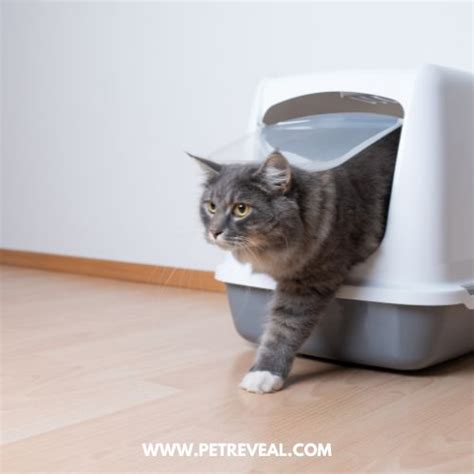Introduction

Welcome, cat parents! The harmonious coexistence between you and your feline companion hinges on meeting their essential needs, including a comfortable and hygienic litterbox routine. This comprehensive guide will empower you with the knowledge and techniques to navigate the intriguing world of cat litter and behavior, fostering better understanding and a more blissful bond with your kitty.
1. Understanding Cat Litter Preferences
Types of Litter:
- Clay: Affordable and absorbent, but may stick to paws and create dust.
- Clumping clay: Forms clumps around urine, making it easy to scoop and dispose of.
- Crystalline silica: Highly absorbent and odor-controlling, but can be sharp and require special handling.
- Pine or cedar: Natural and biodegradable, but may deter some cats due to its strong scent.
- Paper: Sustainable and biodegradable, but less absorbent than other types.
Factors to Consider:
- Texture: Cats prefer soft, sand-like litter that does not stick to their paws.
- Odor control: Look for litters that neutralize or absorb odors effectively.
- Absorption: The litter should absorb urine quickly and prevent odor formation.
- Dust: Excessive dust can irritate cats’ respiratory systems.
- Clumping ability: Clumping litters make it easier to scoop and remove waste.
2. Litterbox Best Practices
Location and Number:
- Place the litterbox in a quiet, private area away from food and water bowls.
- Provide one litterbox per cat, plus an extra one.
Size and Depth:
- The litterbox should be large enough for the cat to turn around and bury its waste comfortably.
- The litter should be at least 2-3 inches deep to allow for digging and burying.
Cleaning and Maintenance:
- Scoop waste daily and change the entire litter completely every 1-2 weeks.
- Wash the litterbox with warm, soapy water weekly.
- Avoid using strong chemical cleaners, as they can irritate cats.
3. Litter-Related Behavioral Issues
Causes and Solutions:
-
Eliminating outside the litterbox:
- Medical issues (rule out first)
- Stress or anxiety
- Dirty or uncomfortable litterbox
- Litter aversion due to texture or scent
- Territorial disputes
-
Holding urine or pooping outside the litterbox:
- Stress or fear
- Painful elimination
- Litterbox aversion
-
Spraying:
- Territorial marking
- Fear or aggression
- Medical issues
Addressing Behavioral Issues:
- Consult a veterinarian to rule out medical causes.
- Provide a clean and comfortable litterbox environment.
- Reduce stress by providing hiding places and calming aids.
- Use pheromone diffusers to create a relaxing atmosphere.
- Redirect inappropriate elimination by clapping or making other loud noises.
4. Common Mistakes to Avoid
- Using the wrong type of litter.
- Not cleaning the litterbox regularly.
- Placing the litterbox in an inappropriate location.
- Using strong chemical cleaners on the litterbox.
- Ignoring litter-related behavioral issues.
5. FAQs
- How often should I change the litter? Every 1-2 weeks.
- What is the best type of litter for my cat? Depends on individual preferences, but consider soft, absorbent, and odor-controlling litters.
- Why is my cat peeing outside the litterbox? Could be due to stress, anxiety, medical issues, or litterbox aversion.
- How do I clean a litterbox? Wash with warm, soapy water weekly. Avoid using strong chemical cleaners.
- Why is my cat spraying? Could be due to territorial marking, fear, aggression, or medical issues.
- How can I stop my cat from pooping outside the litterbox? Provide a clean and comfortable litterbox, reduce stress, and consult a veterinarian to rule out medical causes.
Conclusion
By understanding cat litter preferences, maintaining a clean and comfortable litterbox routine, and addressing litter-related behavioral issues, you can foster a harmonious and hygienic environment for your feline companion. This guide provides you with the necessary knowledge and techniques to navigate the world of cat litter and behavior with confidence, ensuring a blissful bond between you and your furry friend.





















